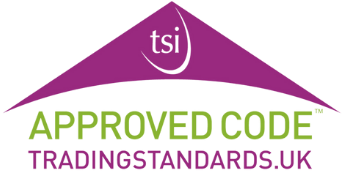The majority of flats in the UK are leasehold.
So, when it’s time to sell a leasehold property, most flat sellers need to understand the correct procedures.
A big part of this is having the correct documents in order.
In the list below, we have summarised all the documents needed to sell your leasehold flat.
But first, let’s quickly establish what a leasehold is.
What is a leasehold?
Leasehold refers to property ownership for a set period. This is typically 99 or 125 years.
Whilst the leaseholder can occupy the flat, the land is owned by a landlord or freeholder. These latter parties often manage building maintanence and can charge the former annual ground rent.
Leasehold flats are sometimes part of larger developments with shared areas like gardens and parking. The leasehold is transferred to the new owner when the flat is sold.
Leasehold flats still increase in value as long as the lease length and terms, ground rent, and location are reliable.
What is the difference between leasehold and freehold?
There are some essential differences between a leasehold and a freehold property.
Firstly, a freeholder owns the land a property is on, whereas a leaseholder has an agreement with the freeholder to own the house for a certain period.
This means land (freehold) ownership returns to the freeholder when the lease expires.
Residents of leasehold flats usually pay ‘ground rent‘ and ‘service charge’ fees for maintaining the area surrounding their property (i.e., shared spaces in the building).
Management companies often maintain this on behalf of freeholders (who are responsible for it).
Documents needed for selling your leasehold flat
1. Copy of your lease
A copy of your lease is essential for selling your flat.
It contains an essential piece of information: the length of your lease.
Some mortgage lenders are reluctant to offer mortgages on a house with a lease shorter than 90 years. Your potential buyer(s) will want to know whether your property falls within this category.
This document should include other information, such as:
- Details about the property
- Rights granted with the house – for example, shared areas
- Regulations – e.g. pets, loud noise, or carpeting
- The existence of a ‘sinking fund’
- Subletting
- The landlord’s obligations
This information can be beneficial in many situations, including disputes and resales.
2. Leasehold Information Pack
Your Leasehold Information Pack (also known as a Leasehold Management Pack or TA7 form) includes details about:
- Ground rent payments
- Service charge payments
- Administration fees
- Your freeholder’s plans for major work
- Information on a Building Insurance policy
- Details about the Management Company
- Asbestos surveys
- External wall fire surveys
A solicitor/conveyancer will usually complete this form for the new buyer.
In most cases, a potential purchaser will want to view the TA7 form before they complete the deal. So you should have it fully completed as soon as possible.
3. Proof of your identity
All property sales – whether leasehold or any other type – require proof of your identity.
This adds a layer of protection against money laundering and guarantees you are legally permitted to be in the country.
4. Property title deeds
Title deeds are required for almost all property sales.
They clarify the legal owner of a house, which is required to ensure that you have the right to sell it.
Once your property is sold, the new owner’s name must be transferred onto the title deeds, and yours will be removed.
5. Energy Performance Certificate
In the United Kingdom, an Energy Performance Certificate (EPC) has been a legal requirement for selling a property since 2008.
There are only a few situations when an EPC is not required—for example, if you are selling your flat fast to a cash house buyer.
Your EPC will typically include both of the following critical pieces of information:
- The cost to heat and light the property
- What the energy efficiency could be if improvements are made
A qualified professional can visit your property in person to conduct their inspections. If your property passes, they can provide an EPC certificate.
From 2025 onwards, the UK government intends to enforce a law requiring any house rented out to have a minimum EPC rating of ‘C’.
This makes achieving this rating a top priority, and properties that meet the criteria will probably sell for higher.
6. Fittings and Contents Form (TA10)
The Fittings and Contents Form (or TA10 form) is a legal requirment in the UK. It provides information about what is and isn’t included in the sale of a property.
The typical TA10 form is split into the following 11 sections:
- Basic fittings
- Kitchen
- Bathroom
- Carpets
- Curtains and curtain rails
- Light fittings
- Fitted units
- Outdoor area
- Television and telephone
- Stock of fuel
- Other items
The form clarifies which of these items is included in the sale of the house, i.e., what will be left behind for the new owner.
7. Property Information Form (TA6)
The Property Information Form (often referred to as the TA6 form) gives the buyer clear information on the property, including:
- Boundaries
- Disputes with neighbours
- Planning permissions
- Warranties
- Alterations made to the property
Completing this document as completely and accurately as possible is a legal requirement.
If you are found to have misled your buyer, you may face legal issues. This applies even if the discovery is made after the transaction is completed.
8. Building Regulations Certificates
A Building Regulations Certificate confirms when structural works, such as pipe changes, are completed on a property.
It is possible to get a mortgage even if a Building Regulations Certificate is not present.
However, some major lenders will not offer this service, meaning a less ‘typical’ bank may be required.
If your house does not have a relevant Building Regulations Certificate, your buyer may be worried about the legal/safety implications.
For example, it may mean that a local authority has not verified the building work for compliance with the applicable building regulations.
9. Warranties and guarantees
If your house was built within the past decade or so, you should have a warranty from the builder.
Some buyers consider this document very important. If there is an issue with the property after the sale, it can give them essential protection.
Sell your leasehold flat fast with We Buy Any Home
If you want to sell your flat quickly, We Buy Any Home can help.
Because we are cash buyers, we can purchase your property up-front and quickly, without hassle, stress or a property chain.
Using our own funds, we our purchase can be:
- At a set price
- By a date of your choosing
- Fully managed from beginning to end
Fill in our enquiry form below if you want a cash offer for your house.



















